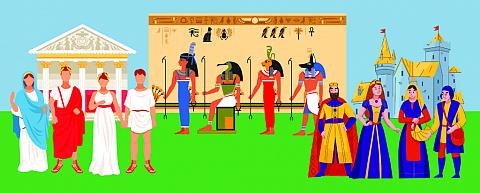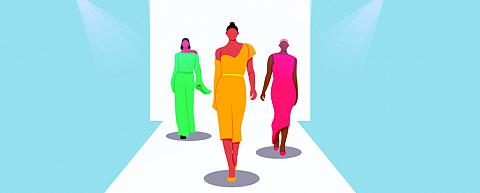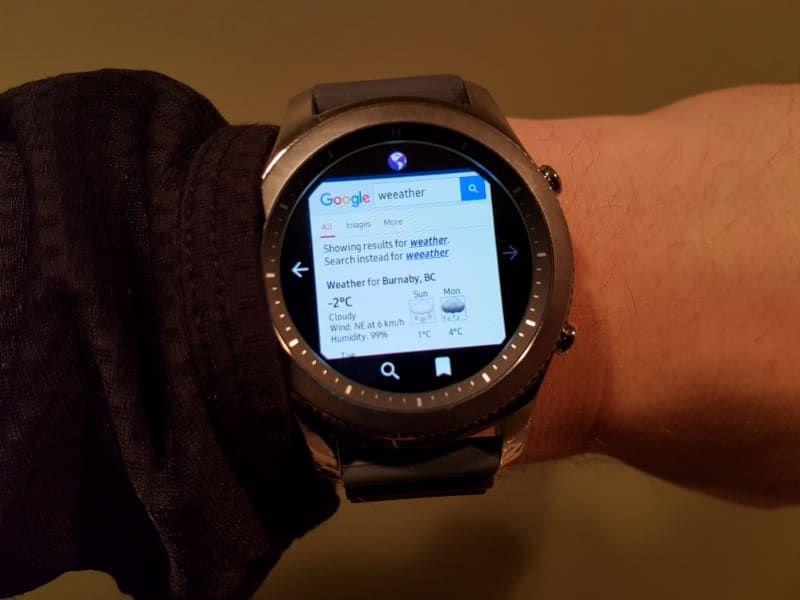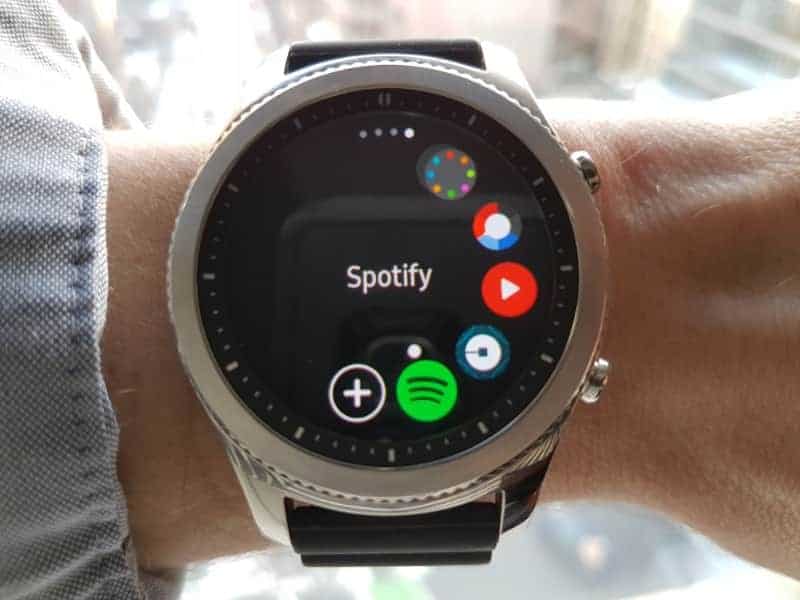A tour through the fashion industry, from Ancient Egypt to the modern era

A love of fashion is something that is unique to the human race. It has been an important part of our lives for thousands of years now. Interestingly, fashion was one of the few things that was developed independently across nearly all of the world’s cultures.
Fashion began as a statement of wealth and power. While it is still both of those things on some level, it has now evolved into more. Now, people on all levels of society use fashion as a form of self expression.
Throughout history, there isn’t a political movement or revolution that hasn’t been linked to or defined by its fashion on some level. From the Cavaliers of King Charles who made a point of going to war in their finest wigs, to the Pussyhats of the 2017 women’s rights marches.
Fashion has changed drastically over time, more than any other form of art. However, (as you will notice throughout this article) many parts of fashion are cyclical, with fashion trends returning time and time again. We’re even starting to see the return of men wearing makeup, which was very prevalent in Ancient Egypt.
In this article, we are going to look at how style and fashion have evolved over time. Starting in Ancient Egypt and following it right up to the Pandemic-friendly fashion of the 2020s.
Table of Contents
- Early Historic Fashion
- Early Modern Fashion
- Fashion at the Turn of the Century
- Fashion Today
- Summary
Our other fashion timelines:
Early Historic Fashion

There are four periods of history that had a major impact on modern fashion – Ancient Rome, Ancient Egypt, the Middle Ages, and the Renaissance. Let’s take a closer look at these fashion eras.
Fashion in Ancient Egypt
Egypt was one of the first civilizations to keep detailed records of their lives. For this reason, they are one of the earliest civilizations that we know a lot about. Through these records we are able to understand how fashion impacted their daily lives.
The majority of the clothes worn in Ancient Egypt were made from cotton. They grew a lot of it and it helped them to keep cool in the blistering heat. Both men and women wore makeup for a similar reason. The Egyptians used makeup as the original form of sunscreen.
Jewelry was such an important part of Egyptain society that the rich had themselves buried with jewelry to wear in the afterlife. Their jewelry was made of precious metals and adorned with rare gems.
Broaches with scarabs on were also common. It is believed that the scarab brought good luck, wealth, and protection to the wearer.
However, the aim of Egyptian jewelry was to be as colorful as possible, as it stood out against their cotton clothes and showed that they could afford to buy jewelry.
Fashion in the Roman Era
At the height of the Roman Empire, the Romans were trading with other civilizations from all over the world. They had silks imported from China, and spices and dyes brought over from the Middle East. They also had access to a lot of fine metals and precious gems.
In Rome, dressing well was a sign that you were a wealthy person with a lot of power to your name.
Wealthy Romans could be spotted in brightly colored togas – made of varying materials. Married women could be seen in ankle length garments called stomas. However, if a woman was disgraced or was believed to have committed adultery she would be forbidden from stomas.
It is in Ancient Rome where we see the rise of the Wig. As hairstyles passed in and out of fashion quickly, most rich men would wear wigs to be able to keep up with the trends. These trends would be set by the Emperor or members of the Senate.
Broaches and bracelets were also an important element of Roman fashion – the more expensive the better. It was also frowned upon for married women to wear ankle bracelets.
Fashion in the Middle Ages
In the middle ages (also known as the dark ages) is where we begin to see the hints of what modern fashion will become.
It is in this era that we see dresses, shirts, jackets, doublets, and many other staple fashion pieces first emerging.
Nobles and royalty began to have their clothes made for them by tailors. Their fashion choices dictated what everyone else would wear. The quality of your clothing is an indicator of your place in society. However, women always wore head coverings.
In royal courts, it wasn’t uncommon for people to show allegiances by dressing in the fashion of the newest political powers.
With the introduction of the Spinning Wheel and the Horizontal Loom, it was possible to make fabric at a much faster pace. The prices of attractive clothing dropped, and Europe began its love affair with fashion.
Another thing that had a huge influence on European fashion in the middle ages was the Crusades. Fighters brought back new fabrics, gems, and styles. One of the major changes was the introduction of fitted garments, designed to compliment body shapes.
Fashion in the Renaissance
During the Renaissance, laws were introduced that prevented peasants from being able to wear many different types of clothing. This led to a greater gap between the dressing habits of the rich and the poor.
Even in the Renaissance fashion trends changed from year to year. It was still heavily influenced by the royals and nobles of Europe.
Women in this era began to focus on creating an illusion of a shapely body, as parts of their garments became tighter. Corsets became an essential part of everyday life and many women even wore padding over their bottoms to make them look rounder and larger.
Upper class men wore tights with flaring knee-length trousers. On their top half, they would wear a shirt underneath a doublet. They would accessorize with ruffs and tight fitting jackets.
Lower-class members of society wore loose-fitting, plain colored garments that gave them the freedom to move. Unlike the upper classes who had their servants dress them in very restrictive outfits. Peasants were also banned from wearing many types of expensive fabric, and items like furs were reserved for the top levels of society.
Early Modern Fashion

The next three time periods we are going to look at are often referred to as the ‘early modern’ period of fashion. Many of the fashion elements we know today come from this era or evolved from the late Renaissance period.
Let’s begin by looking at fashion trends in the 1600-1700 centuries. In particular, we are going to look at the women who dominated these periods in fashion.
Fashion Through 1600-1700
The main fashion icon of this era was Queen Elizabeth I of England.
However, the era was heavily restricted by England’s Sumptuary laws that prevented most of society from wearing the finest things fashion had to offer. Fines were harsh, they could even result in a loss of property and stripping of titles.
The Queen and her royal court had a huge influence over what the upper levels of society wore. While other European Royal families had a small amount of influence, they would soon be cast aside if diplomatic tensions dictated.
Across the rest of Europe, the decadence of the French and Spanish Royal courts had a huge influence. Temperatures were higher in Spain, their clothes were often lighter and a little more practical. However, the French were notorious for their over the top outfits and hairstyles.
Men’s fashion stayed fairly similar throughout the century. However, the status of explorers like Sir Francis Drake did usher in an era of slightly more practical male outfits. Although things changed again as he fell out of favor with the Queen.
Fashion Through 1700-1800
The 18th century is renowned for its obsession with opulence.
During her time on the throne, Mary Antoinette was the fashion queen of Europe. Thanks to the tireless work of her Parisian dressmaker Rose Bertin.
Antoinette was famous for her disregard of etiquette and courtly rules. She chose to dress extravagantly as her own way of raging against the machine.
However, this style of dressing went out of fashion after Antoinette and many over members of the French aristocracy were killed during the French Revolution.
One of the things that made these outfits possible was the beginning of the Industrial Revolution in England. In terms of fashion, the key inventions were the sewing machines.
Fabrics no longer had to be woven by hand, and human error was no longer a factor. These machines could produce perfect fabrics at a speed that had never before been possible or imaginable.
The prices of fabrics plummeted and Europe’s clothing industry flourished.
It became possible for people outside the nobility to begin to dress well. The Industrial Revolution created a whole new generation of rich people who were happy to jump onto the latest fashion trends.
Men continued to wear fitted trousers and jackets. The mass production of fabric meant that these suits could now be made of anything. Country gentlemen opted for the more practical woolen suits, while the upper echelons of Paris would often be spotted in suits made entirely of silk.
Fashions remained fairly unchanged between 1600-1800, however, everything was about to change.
Victorian Fashion
The outfit that most people picture when they think of the Victorians is a heavily corseted dress with bussets and underskirts, complete with matching bonnet and lace gloves.
While this does some up the main fashion trends of the era, the Victorians also began to opt for less restrictive items of clothing.
In this era, we saw the birth of the world’s first major fashion designer – Charles Frederick Worth. It was Worth’s choice to move from Britain to Paris, and work from the city of love that led to Paris becoming the world capital of fashion. And to the Parisian fashion houses becoming the dominant voice in fashion from the 1930s onwards.
Worth’s success marked a huge change in the attitude towards fashion. No longer were the clothes makers forced to make whatever their masters wanted. Instead, the clothes makers were the ones dictating the fashions of the era.
Because of this fashion magazines were developed to help the women of high society keep up with the newest trends all over Europe. This was also the time when the first sewing patterns were created and sold, to help clothes makers replicate garments en masse.
By the late 1880s, fashion had entered the era of La Belle Epoque. And these styles were popular in Europe until the outbreak of World War 1. La Belle Epoque fashions focused around heavily cinched waists and ornately decorated everything else. The ladies wore enormous bonnets dripping with jewels or peppered with large feathers.
Fashion at the Turn of the Century

The start of the 20th century was a bleak era for fashion, as World War 1 brought the world to a grinding halt.
the four years of the water and many subsequent years countries like France and other areas of mainland Europe lacked the supplies and the workforce to produce clothes at the speed they had pre-war.
However, in America, things were a little different.
Roaring Twenties
For men, the defining fashion item of this decade was the lounge suit. After the hard years of war, men – particularly the younger men – looked for fashion as far away from their army uniforms as possible. Trilbies became popular amongst the middle class and gangsters alike. However, the men of this decade stuck to their army-like haircuts, keeping their hair short and neat.
For women, the key change of the decade was the change in the waistline. Which dropped from the bottom of the ribs to rest in the middle of the hips. Changing the fashionable silhouette from an S shape or hourglass to a tubular, straight-line silhouette. The Cloche hat was also incredibly popular throughout the decade.
Hairpins and brooches were the most popular types of jewelry of the era, along with heavy pearl necklaces.
The younger, more fashionable women were often referred to as flappers. Their style has become the definitive memory of the Roaring Twenties. This is thanks to Hollywood’s obsession with the era, and it is immortalized in books like The Great Gatsby.
These flappers wore skin colored stockings and bright garters. While older women wore hemlines between their ankles and knees during the decade. It was not uncommon for flappers to let their skirts fall above the knee.
Kitten heels and bobbed hair were other mainstays of the decade. The decade was also filled with colorful fabrics.
30’s, 40’s 50’s Fashion
These three decades were a turbulent time for fashion. Most counties began the 1930s in a time of peace and opulence, but by the end of the 50s, most were still recovering from the Second World War.
For men, suits were popular throughout these three decades. During the war, they were hard to get hold of due to fabric shortages, but most men were expected to wear a uniform of some sort.
Androgyny had been all the rage in the 20s, but this gave way to a slinkier form of femininity in the 30s. Tight dresses, small hats, and fur coats defined the decade.
With the 40s came war and fabric shortages. Big designers, like Hugo Boss, were drafted into designing uniforms for their homelands. Clothes became practical and boxy – reminiscent of army uniforms. Many countries were forced to ration fabrics until the end of the decade.
In 1947, Dior released a collection that lengthens skirts and softens the boxy edges of shirts. Femininity and modesty became more fashionable again. And women who had spent half a decade in army uniforms were forced back into the restrictive clothing of housewives.
The 50s were neat, prim, and proper. With women dining pencil skirts and cropped jackets as their daily wear. Hats were small and neat, and pearls were back in fashion. Sloping shoulders and cinched waists were the desired silhouettes.
At the end of the 50s, American stars began to wear leather jackets and jeans – which became popular with much of the youth.
60s Fashion
The beginning and the end of the 60s couldn’t have been more different when it came to fashion trends.
At the start of the 60s men still wore tailored three-piece suits most of the time. However, as mass production of clothing became possible again, new items came along. Most notably collarless jackets and tight trousers.
For women, the 60s saw the first of teen fashion. Young people were earning like never before and they didn’t want to dress like their parents. A few designers saw the opportunity to develop a new market and capitalized on it.
Mini skirts and cropped cardigans ended up being the most iconic items from this new genre of teen fashion. Makeup was also coming back into fashion, women lined their eyes with kohl to make them look bigger and pale foundation was another big trend.
While older women continued to dress similarly to how they had in the 50s. They were often seen wearing knee-length dresses and woolen skirts with matching jackets. These dresses came in muted and pastel colors – a stark contrast to the vortex of colors that the 70s would become.
The late 60s saw fashion becoming increasingly unisex. With men donning frilled shirts with belled sleeves and women beginning to wear oversized, highly patterned shirts in similar shapes. These were the early signs of the Hippy fashion trend.
Oversized features like large lapels and bell bottoms were starting to gain popularity, although it would be another decade before this popularity peaked.
70s Fashion
The 70s brought us Hippy fashion, Studio 54, and Disco.
In the early 70s, synthetic fabrics became more widely available and took the fashion industry by storm.
In the USA, the attendees of the Studio 54 nightclub were considered the height of fashion. The Disco club was attended by all the key social influencers of the time as well as anyone the bouncers deemed good looking enough to enter.
Platform shoes and flares were a consistent trend among men in the 70s. The disco suit also became a must-have clothing item with its flared trousers and oversized lapels. Turtle necks were also starting to make an appearance.
There were two trends that women chose to follow in their millions.
We say the androgynous loose fitting shirts and trousers of the late 60s continued into this decade. The Swedish band ABBA were particular style icons and drove this trend.
When disco was in full swing in the late 70s, thigh high Go-go boots, short dresses, and halter neck tops were all the rage.
Meanwhile, Punk was taking over the British fashion scene, with designers Vivienne Westwood and Malcolm McLaren leading the way. Tartan and safety pins were the defining items of this fashion movement.
Punk was a loud statement of rebellion. Many of the looks could have been mistaken for high fashion pieces. Bands like the Buzzcocks and Blondie were huge influences in the fashion scene at the time.
80s Fashion
If you could sum the fashion of the 80s up in one word it would be EXTRA.
In a stark contrast to the following decades, in the 80s the bigger and brighter the outfit, the better.
The best example of this was the shoulder pads trend. This began at the end of the 70s as disco was on the rise. The shoulder pads started off small, but as the decade progressed they only got more impressive.
The 80s also continued the previous decade’s obsession with bright (almost oppressive) patterns – polka dots, animal prints, and stripes were a must. And, of course, you cannot talk about the 80s without mentioning neon block colors.
Huge accessories were also a key part of the quintessential 80s looks. They needed to be enormous, brightly colored, and ideally clashing with the rest of the outfit.
Men’s fashion was fairly tame in the 80s compared to the decade before. Dad jeans were the look you could spot most men sporting. Denim and bomber jackets were also a huge hit in the 80s – thanks to the influence of the bands and movies of the time. Long hair was out of fashionTikTokunless you were rocking a mullet.
One of the true fashion icons of the decade was Cher, and many see her ‘nude’ dress as the beginning of the end of over the top 80s fashion. And the start of the transition into low-key 90s glam.
90s Fashion
Grunge and Rise of the Supermodel
There were three main fashion trends that defined the 90s – grunge, fashion show obsessions, and the growing popularity of Nike and similar brands.
Let’s start with the fashion show obsession. At the start of the 90s fashions shifted dramatically towards more simple and sophisticated looks. Figure-hugging clothes came back into fashion.
As this happened the world became obsessed with fashion shows. Everyone who was anyone could be found lining the runways of New York, Paris, and Tokyo. The supermodel body became the new ideal. And fashion designers had possibly their most successful decade ever.
With bands like Nirvana and Smashing Pumpkins topping the charts in the 90s, it was only inevitable that Grunge fashion would become somewhat mainstream. Grunge took elements of the 70s punk look but toned it down. It was also about looking like you didn’t care how you looked – faded, oversized shirts were paired with ripped jeans and Converse All Stars. Many of these trends continued on into the 21st century.
Some described 90’s grunge as punk meets lumberjack. Which made a lot of sense as the grunge screen was born out of West Coast towns like Seattle.
The final defining trend of the 90s was the rise of sports brands. Skate culture was at its peak and the NLB had never been more popular. Gym shorts became acceptable streetwear, and the athleisure trend (that we’re still enjoying today) was born. Sports brands were particularly popular with hip-hop artists at the time.
00s Fashion
The influence of fashion houses wavered for a bit at the start of the 21st century. Instead, we saw the rise of The Brand. Brands were less stubble, and it was easy to tell what brand people were wearing even if you didn’t follow fashion.
Some designers chose to collaborate with brands to keep themselves relevant. Releasing collector’s pieces inspired by the brand’s style. We even saw Balenciaga release a range of Crocs (are Crocs really that comfortable?).
Comfort was the main theme of this decade. With streetwear becoming one of the dominant styles for many years. Denim was also a huge feature of the decade. Beginning with all things blue-wash denim at the start of the decade (think Justin Timberlake wearing an all-denim suit on the red carpet), to the skinny jean obsession in the late 00s and 10s.
We also saw the rise of new trend-setting counties. British designers were becoming more popular again, alongside American, Italian and Japanese designers. France remained a major player in the fashion industry.
Mini Skirts and animal prints were other key features throughout the decade. With many celebrities and influencers wearing them no matter the occasion.
Towards the end of the decade, we started to see the emergence of the fast fashion industry.
Fashion Today

Today, fashion is evolving faster than it ever has.
While the high-end designers in the fashion industry still bring out 2-4 new collections a year, we have also seen the rise of fast fashion in the high street.
With retail giants like Boohoo launching a daily average of 116 new items every day. We are also seeing mall stores like Hollister changing their stock as frequently as every three weeks. Seasonal fashion looks to become a thing of the past.
The early 2020s has been an interesting period in fashion already, as 2020 saw the cancelation of most of the major fashion weeks. Most of the world’s population was forced to stay inside for over 18 months, this has also directly affected fashion trends.
Loungewear being the most notable fashion trend to emerge during lockdown – with even Chanel showing ‘comfortable, insouciant, no-nonsense glamour’ at Paris Fashion Week 2020.
As Millennials become the dominant buying force in the fashion sector, we are seeing a rise in 90s nostalgia-themed garments. Tie-dye, plaid, and heavy black eyeliner are all trending again. We have even seen the return of The Rachel in the world of hair.
With so much of the world still under lockdown measures, fashion experts are reluctant to bet on future trends. As many are not sure if we’ll be spending another summer and fall inside again.
The one certainty is that Instagram is no longer setting the fashion trends, like it was in the 00s. It is now TikTock’s turn to call the shots. So much so, that we have even seen fashion houses like Saint Laurent and Louis Vuitton posting on the app.
Here is what the Creative Director of TikTock had to say about this new development, ‘It goes beyond the outfits and into creative expression. TikTok is a place for joy, and it’s giving the fashion industry a whole new way of showcasing their art and personality.’
Summary

Fashion has never been a stagnant concept. From its earliest days, we have seen designers and artists push the boundaries of what was thought to be possible.
3000 years ago it was royalty that was setting the fashion trends and this was still the case until around 100 years ago.
However, with the invention of Moving Pictures and the start of celebrity culture, things have begun to change. Now, fashion lovers can turn on TikTock to check the latest fashion trends and see what the newest influencers and celebrities are wearing.
Fashion still remains a universal language that is studied, watched, and adored from across the globe. And the fashion houses that have dominated the industry for the last century (like Chanel and Saint Laurent) are still leading from the front.




